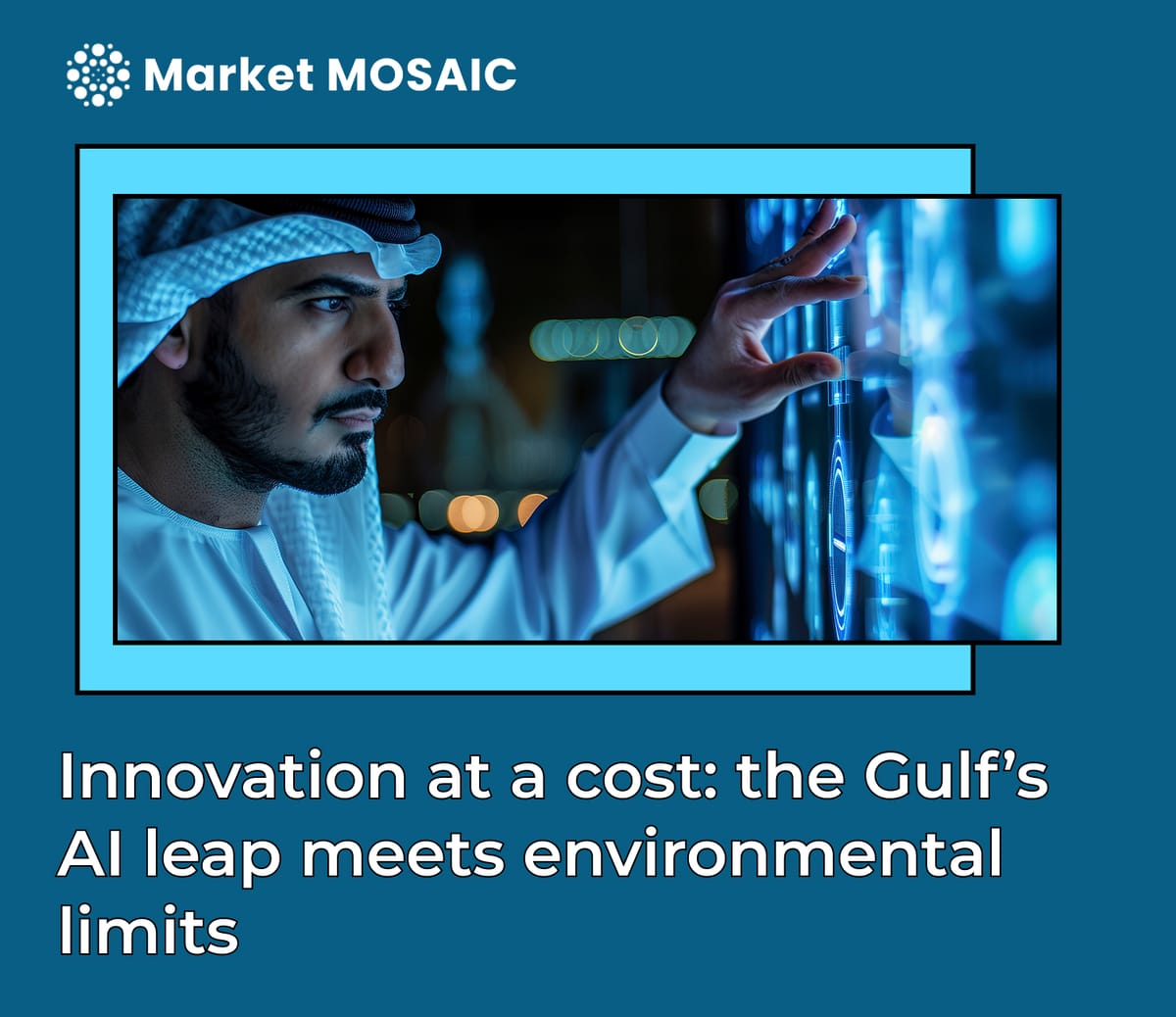Innovation at a cost: the Gulf’s AI leap meets environmental limits
The Gulf’s race to lead in AI is colliding with a harsh truth: innovation needs water. As data centers rise across the desert, environmental stress is mounting. Can the region sustain its digital ambitions without draining its most precious resource?

In the global race to dominate artificial intelligence, the Gulf states have emerged as some of the most ambitious and fast-moving players. With Saudi Arabia and the UAE funneling billions into data centers and cloud infrastructure, the region has positioned itself as the next frontier for artificial intelligence. But as the desert becomes a testing ground for the world’s most powerful algorithms, a new constraint is emerging, one that no amount of capital can easily fix: water.
By 2030, data centers in the Gulf are projected to consume more than 426 billion liters of water annually, an alarming figure for a region where water is among the most limited resources.
Behind every AI-powered chatbot you chat with or playlist recommendation you enjoy, there’s a hidden cost, a vast cooling system that quietly consumes millions of liters of water just to keep the servers from overheating.
AI adoption is surging but awareness is not
Our analysis of consumer behavior in the Gulf reveals a striking duality. On one hand, AI enthusiasm is surging. 67% of consumers in the region use AI-powered applications daily, far above the global average of 43%. On the other hand, only 34% of these users are aware of the environmental impact of their digital consumption. This gap between adoption and awareness highlights a critical challenge for both regulators and corporations: how to grow a digital economy that is not only intelligent but also sustainable.
The loyalty dilemma in a risk-averse market
Environmental awareness is no longer just a public concern—it’s now a critical issue shaping business strategy and consumer trust.78% of Gulf consumers express strong environmental concerns, yet 91% still expect seamless AI-enhanced digital experiences. The contradiction is clear: while consumers want cutting-edge tech, they also care about how it’s made..
In a service economy where trust is currency, operational transparency and responsible innovation are becoming key differentiators. Companies that communicate clearly about their sustainability efforts and back it up with real innovation will earn loyalty in a region where reputational risk can spread faster than any marketing campaign.
Insight for business leaders in the gulf states
For decision-makers, the solution isn’t to slow digital transformation, but to redesign it with sustainability at its core. Leaders building in the Gulf must begin future-proofing their technology infrastructure to withstand environmental pressures, especially water scarcity. This starts with investing in water-efficient cooling systems and rethinking data center architecture to reduce consumption. It also means working closely with local governments to ensure that AI expansion aligns with national sustainability goals—not against them.
Equally important is educating users about the hidden environmental cost of their digital habits. Awareness is the first step toward engagement, and companies that lead this conversation will be seen as more transparent and responsible in the eyes of increasingly conscious consumers.
Those who act now won’t just avoid backlash, they’ll position themselves as pioneers of sustainable innovation in the region.
This is the opportunity hidden within the crisis. If the Gulf can lead the development of water-conscious AI infrastructure, it has a chance to set a global standard for building smart tech in dryland economies. Just as the region once redefined modern architecture and logistics, it can now lead a new era of digital infrastructure, where sustainability is not a trade-off, but a competitive advantage.





